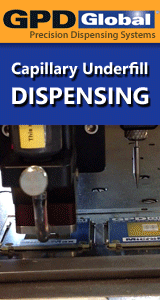Printed Circuit Board Assembly & PCB Design Forum
SMT electronics assembly manufacturing forum.
- SMTnet
- »
- Electronics Forum
- »
- Soldering Iron Questions
Soldering Iron Questions
Views: 3494
![]() I'm looking for some information on soldering irons being us...
- Nov 02, 2006
by
robgd3
I'm looking for some information on soldering irons being us...
- Nov 02, 2006
by
robgd3
![]()
![]()
![]() WE are also going through tips left and right as well with ...
- Nov 02, 2006
by
RDR
WE are also going through tips left and right as well with ...
- Nov 02, 2006
by
RDR
![]()
![]()
![]() Which solder did you use? What process? Just hand soldering?...
- Nov 02, 2006
by
Which solder did you use? What process? Just hand soldering?...
- Nov 02, 2006
by
![]()
![]()
![]() Try Koki S03X7C-56M*** it has colbalt in which prolongs the ...
- Nov 03, 2006
by
Rob
Try Koki S03X7C-56M*** it has colbalt in which prolongs the ...
- Nov 03, 2006
by
Rob
![]()
![]()
![]() The process that burnt the tips up yesterday was hand solder...
- Nov 03, 2006
by
robgd3
The process that burnt the tips up yesterday was hand solder...
- Nov 03, 2006
by
robgd3
![]()
![]()
![]() The temp your iron is set at is somewhat irrelevant, it is t...
- Nov 03, 2006
by
RDR
The temp your iron is set at is somewhat irrelevant, it is t...
- Nov 03, 2006
by
RDR
![]()
![]()
![]() ok, sorry ,750 was deg F and which I said 350~400 were deg C...
- Nov 05, 2006
by
ok, sorry ,750 was deg F and which I said 350~400 were deg C...
- Nov 05, 2006
by
![]()
![]()
![]() *We've tried the WSP80s for leadfree, also SAC. Problem wit...
- Nov 06, 2006
by
*We've tried the WSP80s for leadfree, also SAC. Problem wit...
- Nov 06, 2006
by
![]()
![]() The key to longer lasting solder tips when using lead free s...
- Nov 16, 2006
by
The key to longer lasting solder tips when using lead free s...
- Nov 16, 2006
by
- SMTnet
- »
- Electronics Forum
- »
- Soldering Iron Questions








